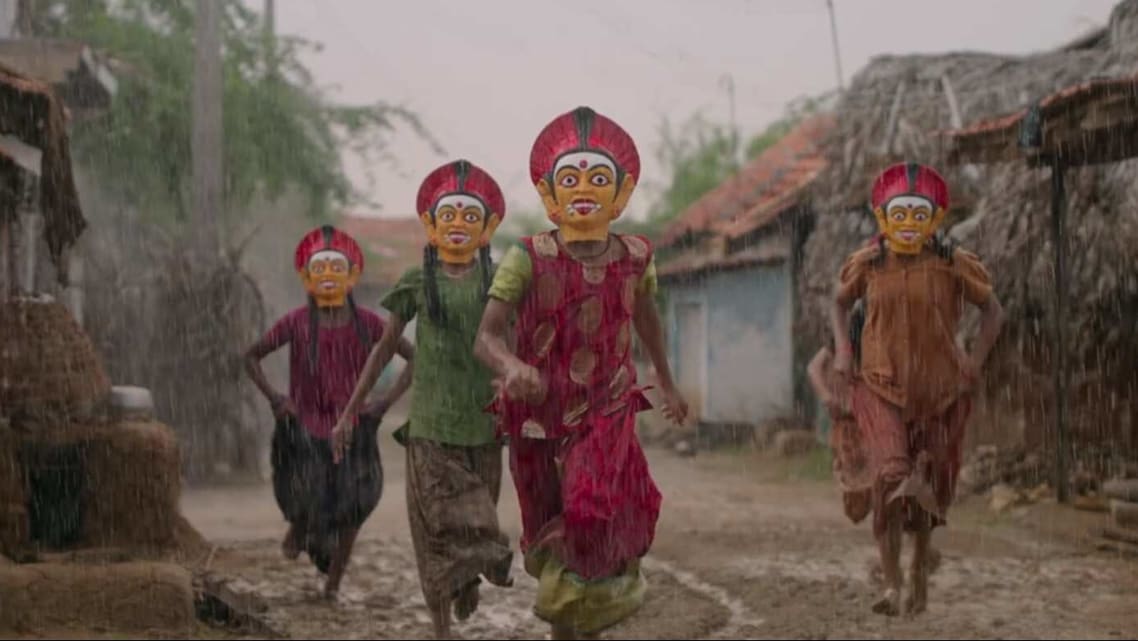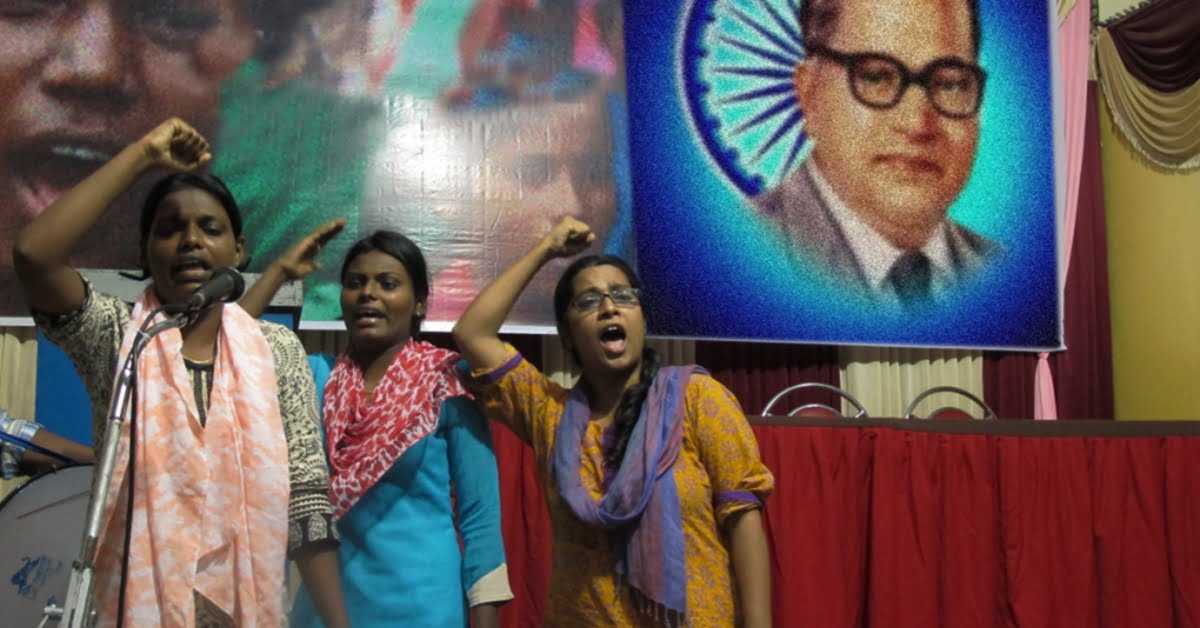Much has been said and documented about the unmitigated oppression that Dalits and marginalised communities in our country have endured for centuries. Yet a simple three-letter word – joy – remains to be a non-existent part of the larger discourse on caste and oppression. It only takes a swift scroll of your social media feed to discover multiple instances of brutality against Dalits. The deadly combination of skewed historical representation and media reportage has built a distant identity of the Dalit individual – traumatised, brutalised, helpless, burdened, scared.
This identity has been accepted not only by the upper caste individuals who have a difficult time grasping the lived experience of this community, but also by the Dalits themselves. Because of the erased histories and silencing of Dalit voices, there has been a continued distortion and misrepresentation of the Dalit identity. The truth is, Dalits have been dehumanised for so long that it is extremely difficult for an average person to comprehend what it means to be a Dalit: what their identity is beyond their social location and the documented Dalit experience.
a simple three-letter word – joy – remains to be a non-existent part of the larger discourse on caste and oppression. It only takes a swift scroll of your social media feed to discover multiple instances of brutality against Dalits. The deadly combination of skewed historical representation and media reportage has built a distant identity of the Dalit individual – traumatised, brutalised, helpless, burdened, scared.
In her 2005 book titled Post Traumatic Slave Syndrome: America’s Legacy of Enduring Injury and Healing, a theoretical work on the African-American community, Dr. Joy Degruy takes a hard look at the residual impact of chattel slavery on black communities. According to Dr. Degruy, the dehumanisation and oppression faced by this disadvantaged group has led them to adopt coping behaviors and patterns of learned helplessness, vacant esteem, distorted self-concept, and antipathy, among others. While their experiences are not exactly the same, a similar evolution of coping mechanisms and belief systems can be observed within the Dalit communities.
Also read: Dalit Histories: Beyond The Binary Of Atrocities And Reservation
Joy vs Happiness
While most people understand the concept of happiness (at least in theory), joy remains to be an elusive emotion for many. One can define joy as a passive or active feeling of gladness, delight or exultation of the spirit arising from a sense of well-being or satisfaction. None of those words would cross your mind when you think of a Dalit person, given their social identity and a burdened, painful history. Yet, joy can be and indeed is a potent gateway to liberation for marginalised communities. While happiness is a state of mind and is perceived to be derived from positive external circumstances, joy, on the other hand, can be chosen. This is where a conscious building of the contemporary Dalit identity takes centerstage in their pursuit of a good life.
Easier said than done, joy can be the answer to building a healthier society with all its injustices and induced suffering. This holds true, especially for the Dalit community, because their life has been fraught with either first-hand lived experiences of discrimination, or painful stories of suffering passed down from one generation to another. Dalits carry within their bodies the trauma, the pain, the lack of self that taints their experience of life. It is a unique way of living, one that needs active intervention on a somatic, mental, and institutional level.
Happiness for a Dalit Individual
Since happiness is a pursuit of a favorable life, enriched with pleasant experiences, it is largely a function of social, physical and mental safety for the Dalit individual. This is where the problem lies – happiness is extremely subjective and when we think of what constitutes happiness for Dalits, it is deeply entrenched in survival instincts. They have been stuck in survival mode since time immemorial because of ruthless, continuing oppression and traumatisation on a collective level.
The average Dalit is looking for acceptance, not just from others, but more importantly from their own self. The fact that Dalits have been deemed unworthy of love, respect, access to education and other essential privileges has left an irreparable dent on their psyches. Happiness then remains superficial – a safe physical environment where they can protect their families, a prestigious government job that ensures security of all kinds, settling for endogamous marriages, acceptance by peers, to name a few.
Trauma ceases the capacity to experience Joy
Years of mental health and trauma studies have equipped us with a revelatory understanding of trauma and its lasting repercussions on the body and mind of a traumatised individual. The works of experts such as Peter A. Levine, Bessel Van Der Kolk and many others have enlightened us on how trauma lives within the bodies and not just the mind. While trauma permanently alters the wiring of the brain and taints one’s experience of life, it is critical to explore the possibilities of healing and the work begins by coming back to the body.
According to Van Der Kolk, “It really is about having difficulty feeling alive in the present, feeling engaged, feeling a sense of pleasure, of joy, of even exuberance at the right moment of just feeling like boy it’s good to be alive. And in the years since that time we have understood a lot about what happens in the brain that interferes with the capacity to feel alive in the present.”
In the face of pain, choose Joy
This is a good time to explore the irrevocable consequences of continued traumatisation that Dalits have experienced and their connection to ‘self’. Trauma lives in the body, and Dalits have had a very complicated relationship with their bodies, thanks to hyperarousal (excessive activation in the form of panic, fear, and emotional flooding) or hypoarousal (shutting down or dissociating) caused by living in a prolonged state of survival mode.
Unpleasant emotions like shame, guilt, and fear are a common thread that connects them together. But this is where we need to look at the unshakeable resilience of this beautiful community: Dalits and other marginalised communities have the capacity to find love, beauty, and healing in community, solidarity, in joys of art, music, movement, and stories. Dalits have persevered and transcended their oppressors through their spirit of ‘keep on keeping on’.
The beauty of joy is that one can choose to find it in the most mundane, and even unfavorable external circumstances. You just need to take a look at a group of women singing and dancing together, children dancing in the rain, creating art, or building camaraderie through shared stories. Joy is mental, physical, and emotional – in those few moments of joy, one forgets and releases the internal pressure and baggage of undefined pain and burdens. Joy is also a thunderous way of resistance – by choosing joy, Dalits can find empowerment and distance themselves from the distorted narrative of imposed victimisation. Our realities are our own, and we must have the power to rebuild our identities in the face of biased and controlled narratives.
Also read: Dalit Trauma: Why It Is Important To Address Its Intergenerational Aspect
Joy fosters healing
Joy resensitises the traumatised individual to their bodies, a crucial step towards healing. The learned disconnection to the body is common amongst traumatised communities – because there is incomprehensible pain and unprocessed, difficult emotions (emotions are felt in the body and are not purely psychological) trapped within the body. Somatic Experiencing, introduced by American psychologist Peter A. Levine, is a powerful healing modality to recover from trauma (soma means body). By coming back to the body and thus connecting to the present moment, rewiring the brain and building a new sense of self that is separate from past memories, the oppressed and the traumatised can find respite from the dated ways of living.

By actively indulging in things and activities that bring them joy, Dalits and other marginalised communities can find healing despite the overwhelming odds stacked against them. The knowledge of trauma theory, epigenetics, and body-centered healing modalities can be a revolutionary step in building a new foundation for healing.
By actively indulging in things and activities that bring them joy, Dalits and other marginalised communities can find healing despite the overwhelming odds stacked against them. The knowledge of trauma theory, epigenetics, and body-centered healing modalities can be a revolutionary step in building a new foundation for healing.
Even though the battle against casteism is long and arduous, that shouldn’t mean that Dalits be stuck in the position of victimhood and helplessness. As we move towards a sensitised and mentally aware society, upliftment and empowerment needs to be whole, not siloed. Mental health of the marginalised matters.
As Jack Gilbert writes in his poem ‘A Brief of Defence’ –
If we deny our happiness, resist satisfaction,
we lessen the importance of their deprivation.
We must risk delight. We can do without pleasure,
but not delight. Not enjoyment. We must have
the stubbornness to accept our gladness in the ruthless
furnace of this world. To make injustice the only
measure of our attention is to praise the Devil.
Featured image source: cjp.org.in
About the author(s)
Priyanka is an unfulfilled engineer and an MBA graduate from IIM Indore. She is a writer, interested in carving the world through her biased lens, painting pictures with heavy imagery and highlighting the mundane, often ignored, but essential aspects of life. Her latest project is The Mental Indian, an attempt to de-stigmatize mental health in India, through stories, perspectives and conversations.




